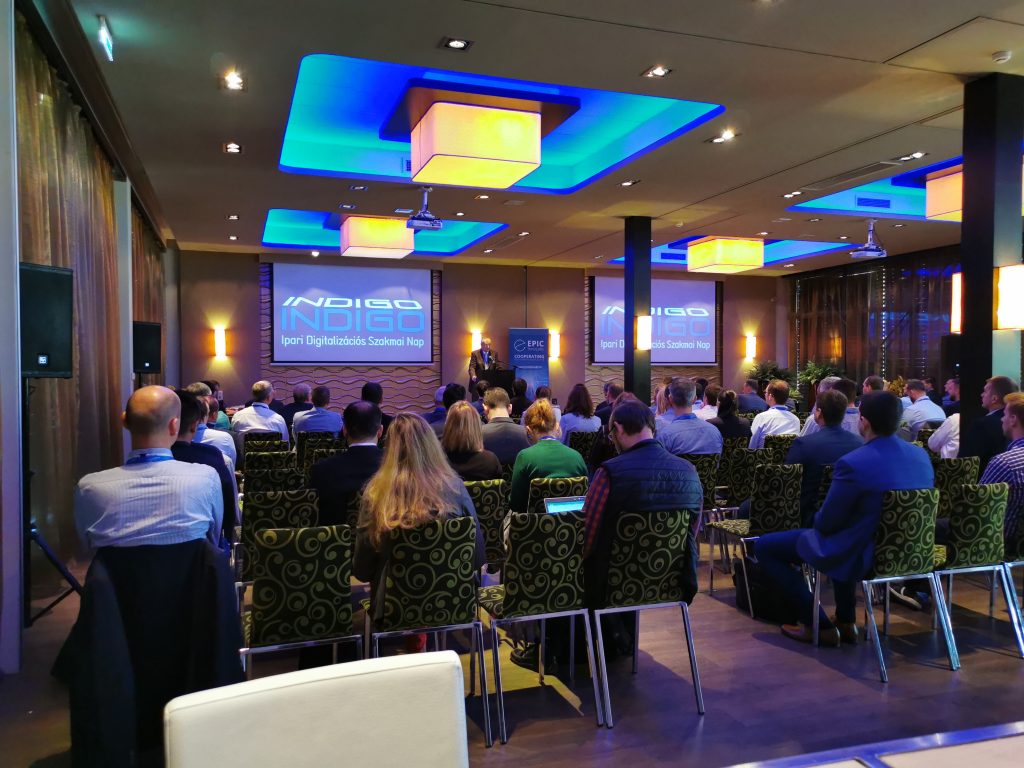INDIGO Industrial Digitisation Day 2019
The event was opened by László Monostori, Director of SZTAKI. In the first presentation, Gábor Nick from InnoLabs and Gábor Bányai, IT manager of Aventics/Emerson reported on the results of an Industry 4.0 maturity assessment project recently completed at the company.
Attila Lengyel, director of Western Digital Analytics (DAO) spoke in his lecture about the digital transformation of their company and pointed out that, although it was extremely difficult to persuade the management of an American giant company to enter into cooperation with a Hungarian firm like InnoLabs, by arguing that the necessary knowledge is available only with them, finally he managed to get through. Their expectations were fully met: the partners could work very well, quickly and efficiently together on a simulation modelling project at one of WD’s plant in the Far East. Arik Lämme, research fellow of Fraunhofer IPA Stuttgart (Fraunhofer Institute for Manufacturing Engineering and Automation) presented some projects in robotics, carried out by the research institute and its industrial partners, highlighting the achievements of human-robot cooperation as well.
Zoltán Vén, Júlia Bergmann, Dávid Czirkó and Ádám Farkas, all from InnoLabs, gave a live demonstration of the software tools InnoLabs is using when working on client assignments in the topic of production optimization. The attendees could follow in a test use case how the benefits of production and logistics simulation, data analytics, production planning and scheduling are created.
Prior to this demo, József Váncza senior research fellow and head of a laboratory at SZTAKI delivered a comprehensive overview summarising the most up-to-date research works and trends in the area of production systems, addressing also the aspects of both the circular economy and the adaptation of the patterns taken from the nature and biology in the production.
In the afternoon session researchers of SZTAKI presented their research results in solving problems encountered in robotics, quality assurance and other industrial topics:
- how robots may be used to check sealing foam profiles rapidly and with high precision;
- how can a given production environment planned and simulated by using a high-conformity copy, the so-called digital twin;
- how artificial intelligence may facilitate visual recognition.
The attendees could challenge their digital abilities in „line balancing”, i.e. solving a task to optimise a production line. Between the individual presentations, the visitors were shown the demonstration of collaborative robots that represent the future of the industry: as they sorted out parts and then assembled them which could formerly be done only manually.









